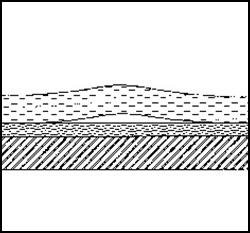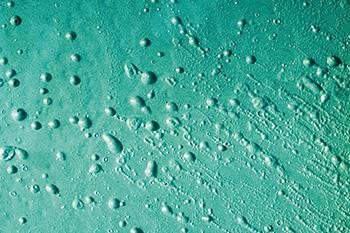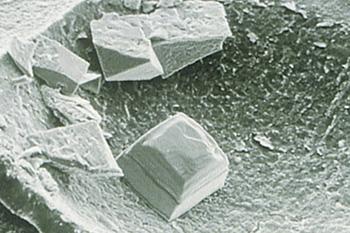Blistering
Definition
In wet weather, a small quantity of water vapor is absorbed into the paint system and will evaporate again in dry weather (osmosis). This process is normal and does not harm a perfectly matched paint system. However, poor processing of the undercoat materials will leave hygroscopic/water soluble substances (salts) behind as contaminants which cause a local concentration of humidity lifting the paint film into blisters. Blisters can occur in many sizes, patterns and frequency and can form between individual layers or beneath the entire paint system. In dry weather, most blisters will recede.

Causes
- The surface to be painted (filler, bare metal, etc.) was not cleaned thoroughly. Contamination from salt residue, e.g., dirty sanding water or hand sweat, was left on the surface before painting. The blister pattern may indicate the cause (beading = wipe marks, prints = finger or hand prints)
- Wet sanding of polyester products without sufficient time to allow water to evaporate before application of undercoats and topcoats.

10x magnification

Scanning electron microscope image: Salt crystals in an open blister. 100x magnification.
HOW TO AVOID
- Thoroughly clean the areas to be painted with clean tap water. Change sanding and cleaning water regularly, especially in winter when vehicle paintwork is covered in salt. Finally, (depending on the substrate) clean the area with Glasurit 700-1 Cleaner, Glasurit 541-5 Wax and Silicone Remover or Glasurit 360-4 Metal Cleaner.
- Do not wet sand polyester products, use dry sanding only.
REPAIR
Sand down the paint system to a “sound” surface. Refinish using the recommended undercoats and topcoats.
 A brand of
A brand of